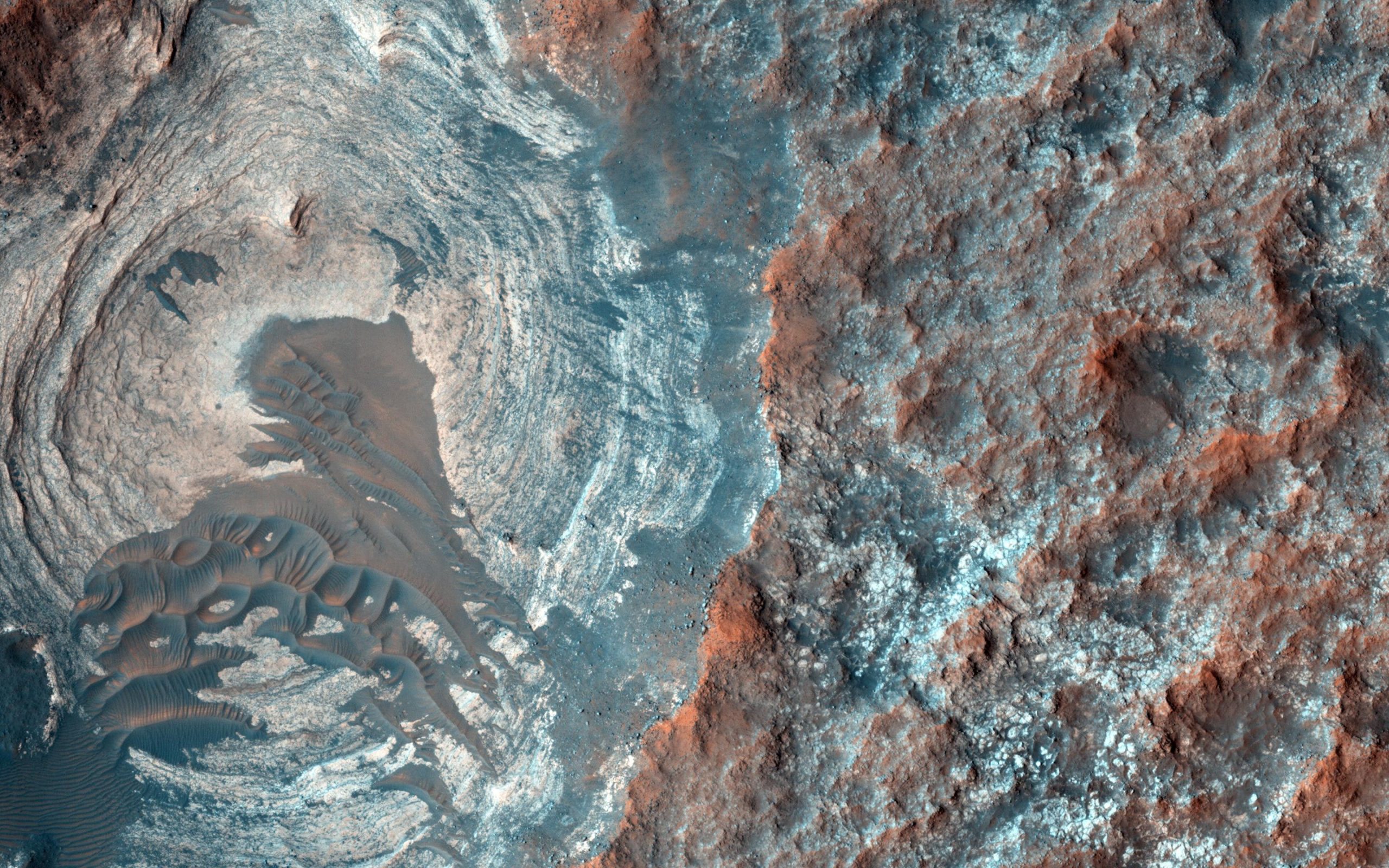
Ian Patrick, FISM News
[elfsight_social_share_buttons id=”1″]
A recent study of radar data from Mars reveals that there are at least 4 lakes of liquid water buried underneath the icy surface of the planet. This discovery was reported in Nature Astronomy and used data from 134 observations of Mars from 2012 to 2019.
The researchers used data from the Mars Express, the European Space Agency’s spacecraft that is currently orbiting the planet. The radar equipped on the craft, called the Mars Express called the Mars Advanced Radar for Subsurface and Ionosphere Sounding or MARSIS, sends radio waves that bounce off the Martian surface and reveals materials from that area. So, reading data from these radio wave pings could reveal things such as the presence of rock, or ice, or in this case water. The waves are strong enough to read materials that lie beneath the surface, which is how the researchers were able to spot the lakes.
The lakes are currently known to exist beneath sheets of ice that make up the Martian ice cap. Mars has a much different atmosphere than that of Earth, so liquid water on the surface is practically impossible. Scientists have wondered if water lied underneath where it is speculated that the planet could be warmer, but Nature notes that “this alone would not be enough to melt the ice into water.” Therefore, it is speculated that the subglacial lakes have an extremely high salt content in order to remain liquid.
These findings, while incredible, add to the debate concerning the possibility of life on Mars. Dried-up lakes and river beds have been photographed on the surface, but researchers have been searching for the existence of liquid water to support the theory that Mars holds life. These subglacial lakes could signify the presence of such life, but the supposedly high salt content of the water would make it inhabitable.
Sourced from Nature and NASA
